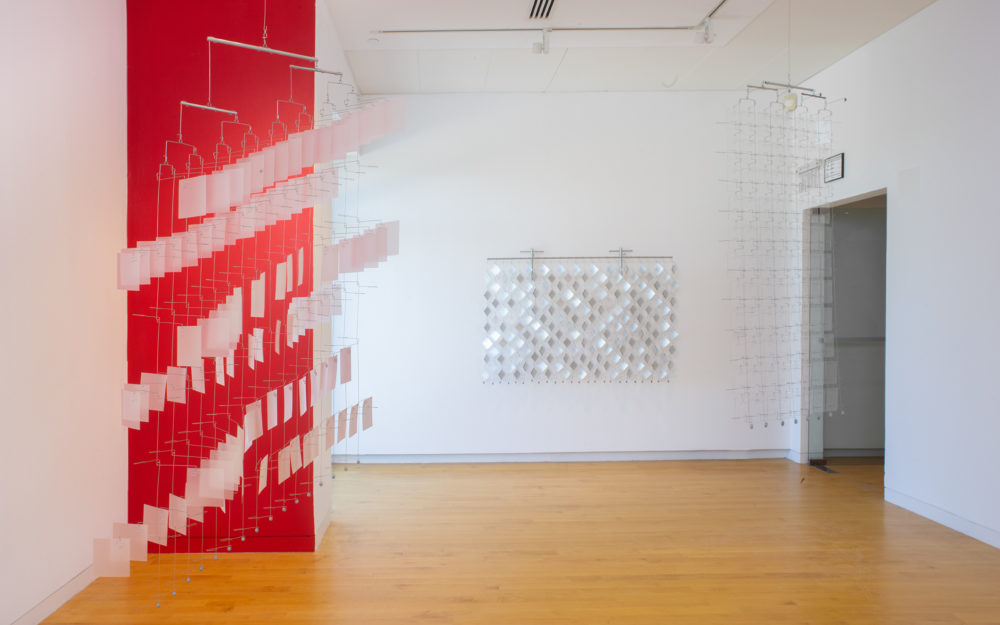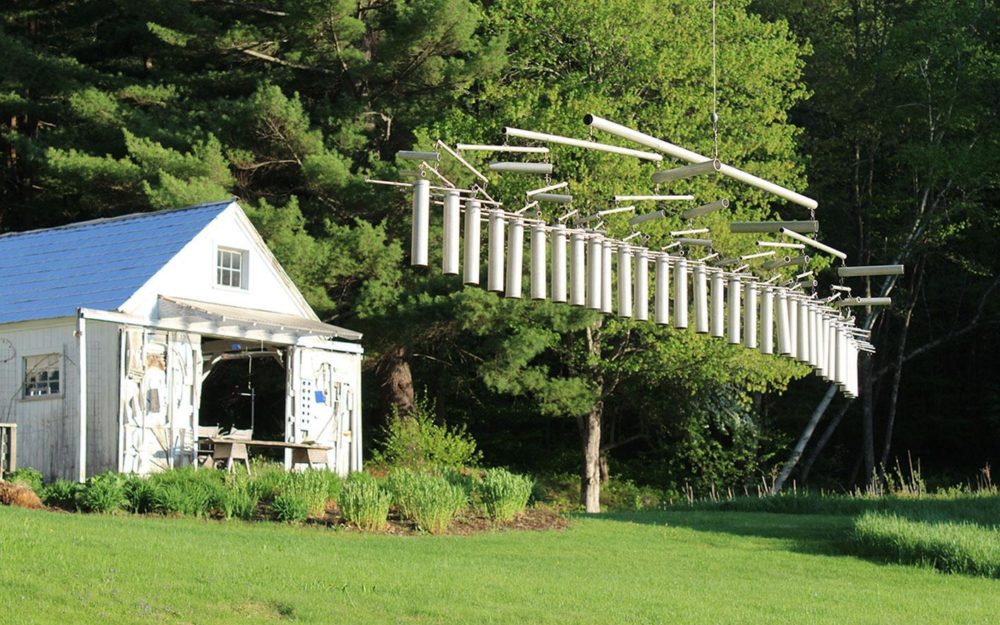- We’re open today from 12 pm to 5 pm
- Purchase tickets
- Join mailing list
- Join as a member
- Donate

Tim Prentice: After the Mobile
After the Mobile is a two-part solo exhibition by artist Tim Prentice (b. 1930), known for his innovative work in the field of motion in sculpture. Prentice has been a resident of Connecticut since 1975, and After the Mobile marks his first solo museum exhibition since 1999. The exhibition will feature twenty indoor works, five outdoor works, and a video portrait of the artist, Studio Visit (2006) produced and directed by Corey Shaff, presented both in the Museum’s galleries and Sculpture Garden, with the indoor exhibition on view from March 29 to October 4, 2021, and the outdoor installation on view from September 19, 2021 to April 24, 2022.
The title of the exhibition refers to Alexander Calder, a former Connecticut resident who in the 1930s adopted the term mobile at the urging of Marcel Duchamp to describe his balanced, moving wind-driven constructions. Calder’s playful Mobiles, and later George Rickey’s delicately balanced minimalist, kinetic sculpture, each defined their time. Prentice’s contribution to the field strongly relates to the rise in the past half century of systems theory, the understanding that cohesive systems are interrelated and independent parts are resilient to external disruption, having the ability to move but always returning to their original form. Prentice’s seemingly complex but simple systems of bent, articulated wire and metal or plastic planes are incredibly sensitive to moving air and seem to be extremely fragile, but are actually quite robust, giving in to the wind’s force, but always recovering with their motion revealing the rippling and fluid patterns of moving air.
Prentice’s work is informed by his former career as an architect. One project of note is his role as lead architect on the main buildings of the Josef & Anni Albers Foundation in Bethany, CT, along with Lo-Yi Chan, (Prentice had studied with Josef Albers as a student). He largely gave up architecture in the early 1970s to devote himself to making art, and his lifelong engagement with music. Like music, the artist’s sculpture is based on strict, underlying patterns and how those patterns allow for variation within set limits. It should be noted that the artist and his assistants construct all of the works themselves, and the fact that they are constantly hand-tinkering with the wire structures as they develop and build them allows for experimentation and incremental evolution. All of the work is created with simple hand tools that one might find in a basement workshop and the hand interlinking of the wire components, while not craft in any traditional sense, does relate to other types of intricate handwork such as knitting. A large part of the charge of Prentice’s work comes out of his ability to create sensuous and beautiful experiences out of hard, industrial materials. Artist David Colbert has assisted Prentice for over thirty years and his role in the artist’s practice cannot be overestimated. Increasingly, Colbert has become a true collaborator in all details of the studio’s output, and he is working closely with The Aldrich on the realization of the exhibition.
The exhibition will be accompanied by a 28-page catalogue featuring an essay by the exhibition’s curator, Richard Klein.
Organized by Richard Klein, Exhibitions Director, The Aldrich Contemporary Art Museum.
Video
Links
Funders
Generous support for Tim Prentice: After the Mobile is provided by the Josef and Anni Albers Foundation, Pam and Jack Baker, and Anita and Nick Donofrio.
Related Exhibitions
Connecticut Artists: Dolnick, Chamberlain, Gray, Kosloski, Prentice, Reed, Scoville, Wulke
Related News
Artist Interview: Tim Prentice
Tim Prentice (b. 1930) is known for his innovative work in the field of motion in sculpture. Prentice has been a resident of Connecticut since 1975, and After the Mobile marks his first solo museum exhibition since 1999.
The Critics Notebook, The New Criterion
This week: On Tim Prentice, Chausson’s Le roi Arthus, Baroque set design & more.
Tim Prentice: Changing the Movement of Kinetic Art, Wallpaper*
Alongside Alexander Calder and George Rickey, Tim Prentice forged a new path in kinetic art. We spoke to the American nonagenarian artist and architect ahead of his major two-part exhibition, ‘After the Mobile’, at the Aldrich, Connecticut.
Top image: Tim Prentice: After the Mobile (installation view), The Aldrich Contemporary Art Museum, March 29, 2021 to October 4, 2021, Courtesy of Prentice Colbert, Photo: Jason Mandella










